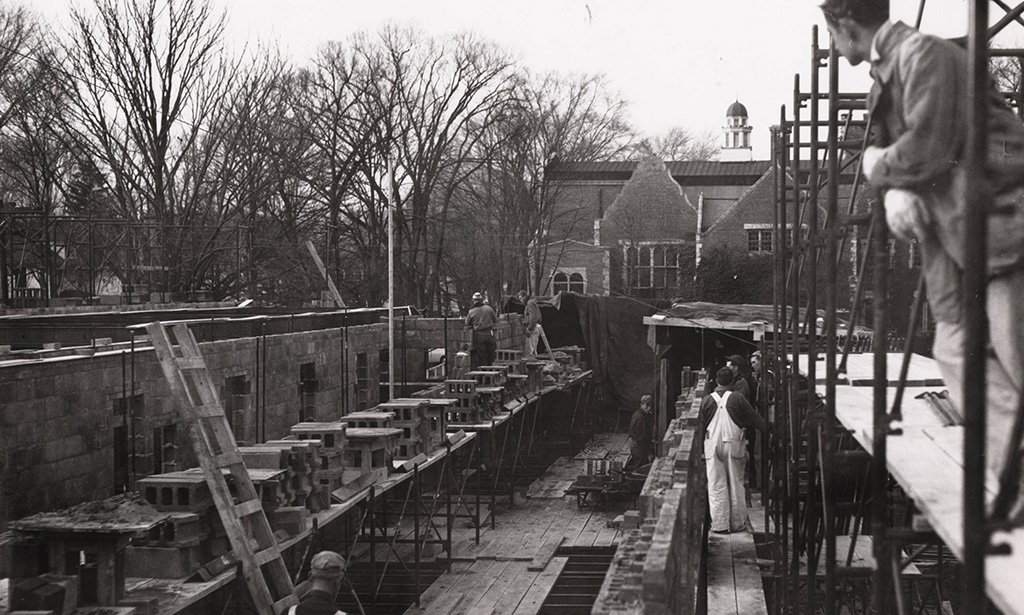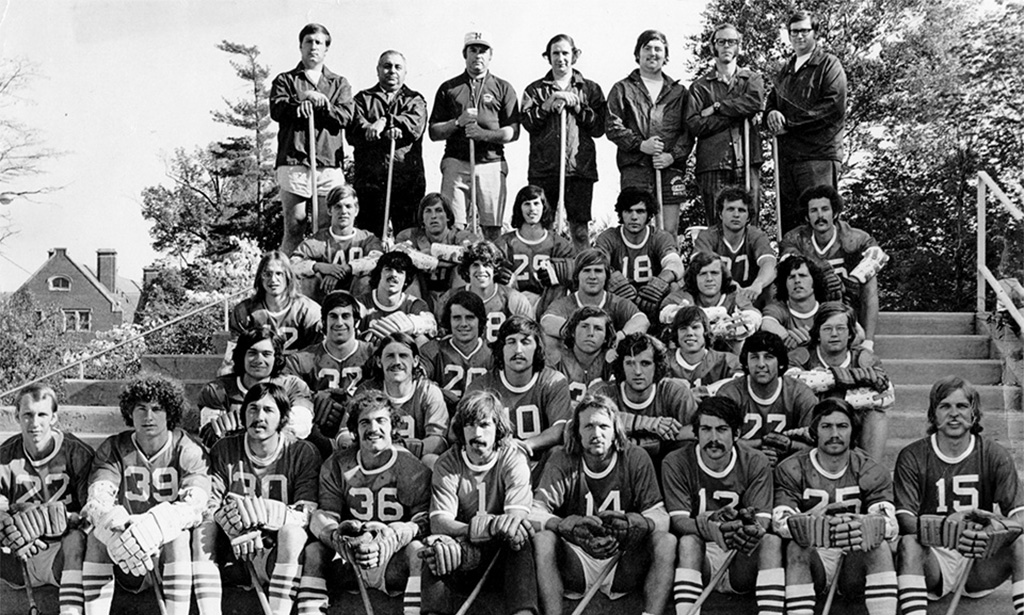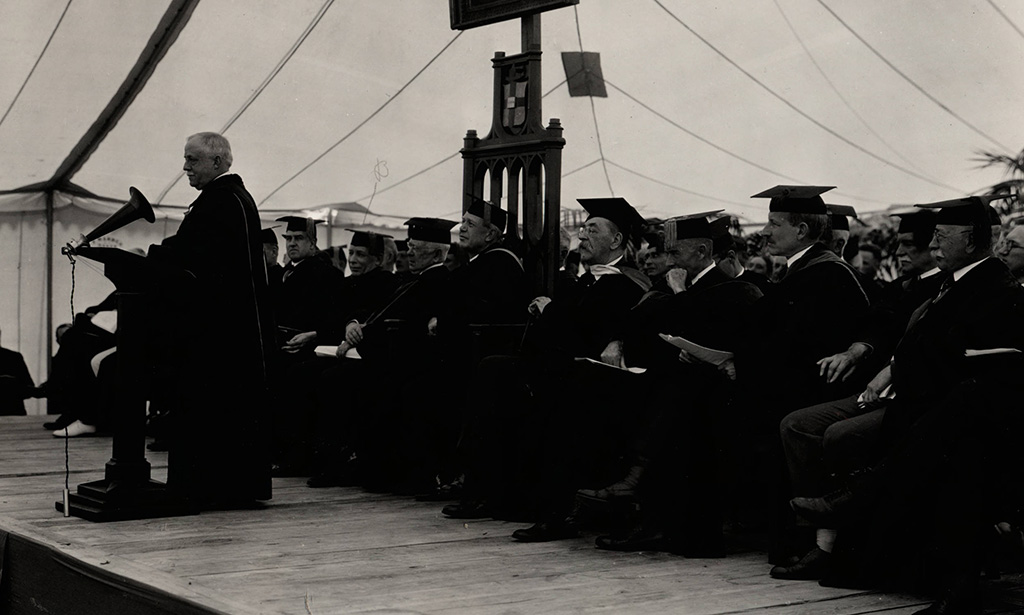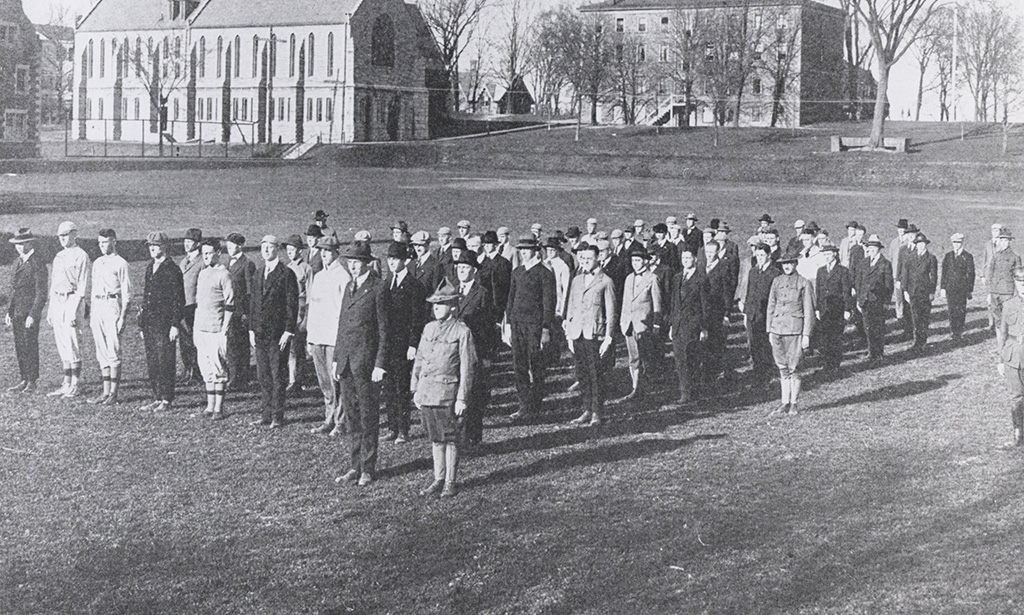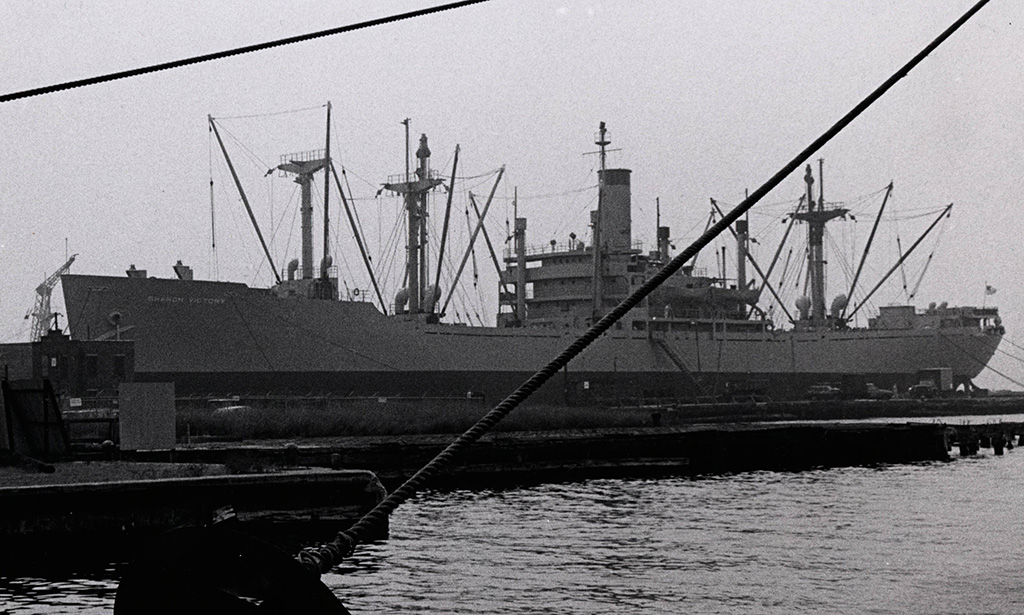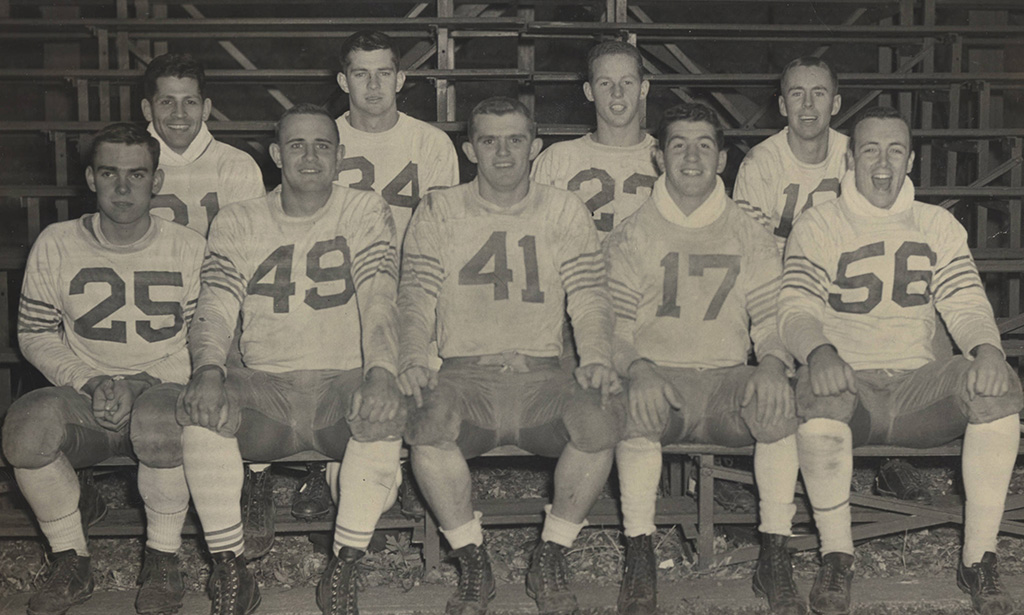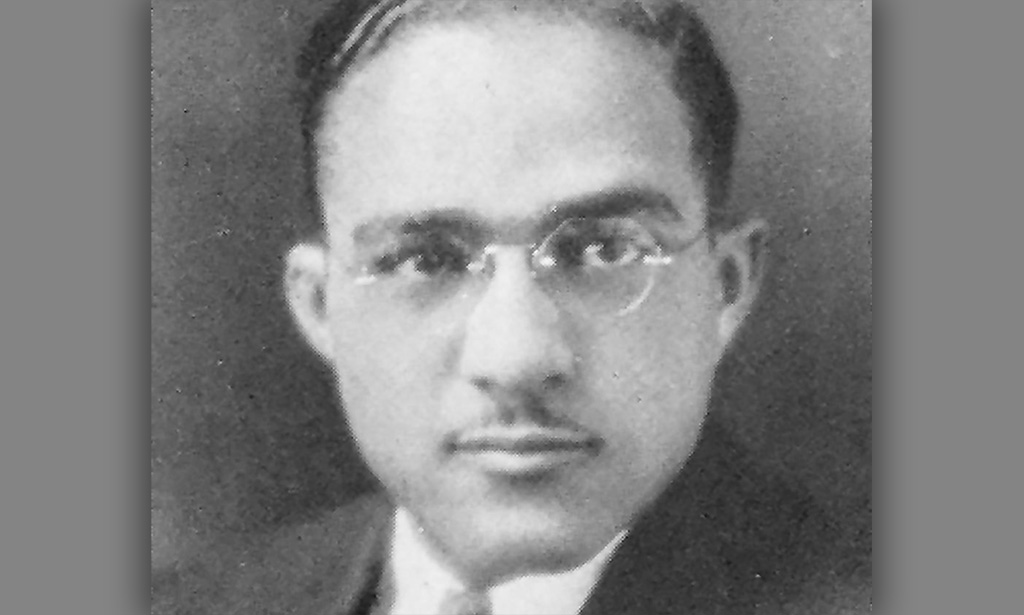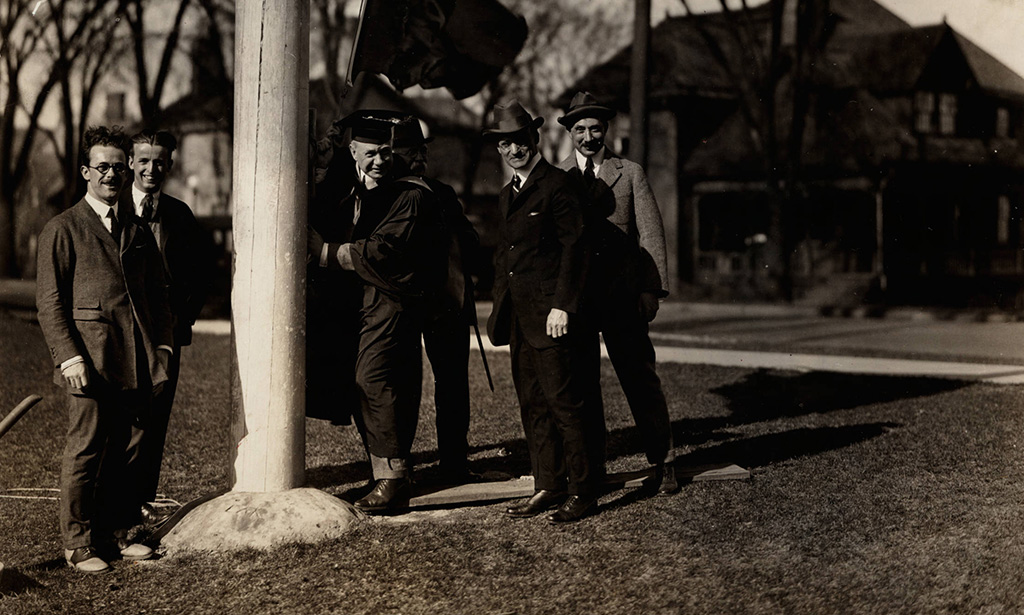
Hobart Bicentennial
Hip Hobart, Forever!
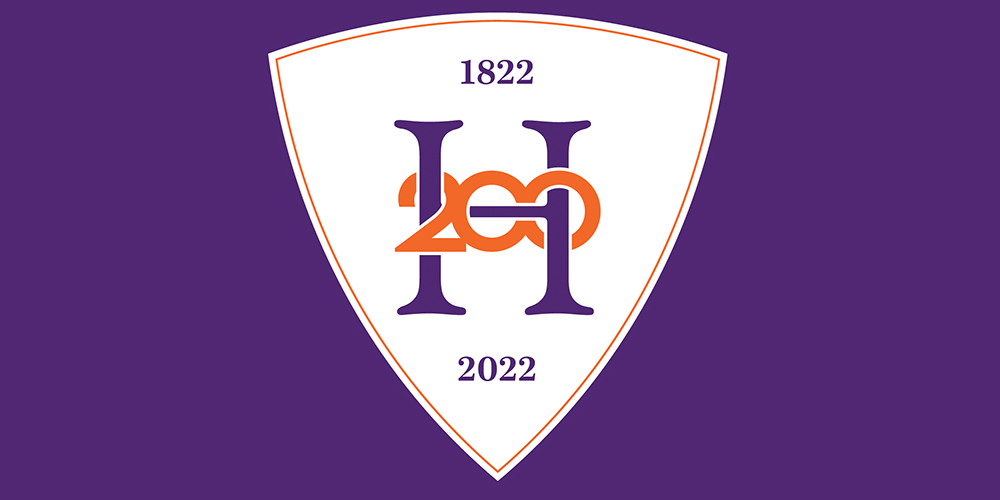
2022 Marks the Bicentennial of Hobart College
2022 marked the 200th anniversary of Hobart College, making it one of the 50 oldest colleges in the United States.
The history of Hobart College is one of ingenuity and perseverance in the face of challenges. Despite the Civil War, World Wars, the Depression, demographic shifts, the Great Recession and the COVID-19 pandemic, Hobart and William Smith Colleges have thrived. Today, the Colleges boast a 320-acre campus of incomparable beauty on the shores of Seneca Lake; about 25,000 living alumni and alumnae whose generosity to their alma mater continues to grow each year; a passionate faculty as dedicated to their students as they are to their research; a thriving athletics program with a successful history and accomplished coaches; strong interest on the part of students to enroll at HWS; and an ever-growing endowment.
The theme of the Hobart Bicentennial – Hip, Hobart, Forever! – comes directly from the alma mater, first performed in 1900 by the Hobart Glee Club after Professor C.J. Rose, class of 1876, composed the music and Edward John Cook, class of 1895, wrote the lyrics. It’s a reminder, always, to celebrate Hobart College and to do everything possible to honor the past as we build an even better future.
This website attempts to encapsulate the 200-year history of Hobart College and to make the HWS community and the general public aware of various events and opportunities to celebrate the Bicentennial. If you have a question, think we are missing an important milestone, or would like to contribute a photo, oral history or video, please email publicity@hws.edu.
Bicentennial Committee
The Bicentennial Committee oversees the Bicentennial celebration year.
- Amanda Blowers, Assistant to the President
- Scott Brophy '78, P'12, Dean of Hobart College
- Glenn Brubaker, Assistant Director, Sodexo
- Rev. Nita J. Byrd, Chaplain and Dean of Spiritual Engagement
- Chevanne DeVaney ’95, P’21, P’23, Director of Alumni and Alumnae Relations
- Ludwig Gaines '88, President, Hobart Alumni Association
- Shawn Griffin P’24, Head Coach, Hobart Soccer
- Khuram Hussain, VP for Diversity, Equity and Inclusion
- Lisa Kaenzig P’22, Dean, William Smith College
- John Marks, Adjunct Instructor, History/Curator of Collections and Exhibits, Geneva Historical Society
- Jamie MaKinster, Associate Provost, Office of the Provost
- Tricia McEldowney, Archivist, Warren Hunting Smith Library
- John Norvell '66 P’99, P’02, Chair, Hobart Alumni Association Heritage Committee
- Alan Paynter, Director of Admissions
- Kathy Regan '82, P'13, Chief of Staff, President’s Office
- Amanda Shaw ’11, Chair, William Smith Alumnae Association Heritage Committee
- Thomas “Gib” Shea '22, Hobart Student Trustee
- Kristin Tobey, Director, Assistant Dean of Student Engagement
- Anna Wager '09, Visual Arts Curator
- Nuzhat Wahid '22, William Smith Student Trustee
- Jared Weeden '91, Director of Principal Gifts
- Aliceann Wilber, Head Coach, William Smith Soccer
- Cathy Williams, VP, Marketing and Communications
Honorary Bicentennial Committee
- The Most Rev. Michael B. Curry '75, D.D. '20, the Presiding Bishop and Primate of The Episcopal Church; Honorary Chair
- Katherine D. Elliott '66, L.H.D. ’08, Honorary Trustee
- Mark D. Gearan L.H.D. '17, P’21, President
- L. Thomas Melly '52, L.H.D. '02, Trustee Chair Emeritus
- Craig R. Stine '81, P’17, Chair of the Board of Trustees
On the Founding of Hobart College
When Geneva College, the precursor to Hobart College, was founded in 1822, the United States was less than five decades old, Washington, D.C. had been the seat of American government for only 21 years and Abraham Lincoln was just 13. Geneva College was founded on the traditional land of the Seneca Nation that for generations was the westernmost territory of the Haudenosaunee Confederacy. Incorporated in 1806, by the early 1820s Geneva, N.Y., had 1,700 residents, 250 dwellings, two printing presses, a bank, a land office and Geneva Academy, founded in 1796.

Bishop John Henry Hobart
Bishop John Henry Hobart, for whom the College would eventually be named, was the third Episcopal Bishop of the State of New York, a prolific author and a popular orator. He was born in Philadelphia in 1775, educated at the University of Pennsylvania and Princeton University, and ordained a deacon in 1798. By 1816, he was the rector of Trinity Church in Manhattan, arguably the most influential and wealthiest church in the United States. Hobart regularly traveled New York State to visit various parishes. With its bustling community, he saw Geneva as the ideal place to establish a college that would be, as he described it to Geneva residents, a “...stronghold for the Church in the West...”
Genevan Thomas Davies Burrall describes the moment in September 1820 when Hobart chose the site for the college: “…just as the first rays of the sun were glancing over the waters of our beautiful lake; a few friends were present by appointment…when on consultation and deliberation on the different opinions of those present, [Hobart] in his brisk and decided manner, struck his cane to the ground, saying, ‘Here, gentlemen, this is the spot for the College;’ and on that spot it was placed.”
Look for a complete biography of Bishop John Henry Hobart in the Spring 2022 issue of The Pulteney Street Survey written by The Rt. Rev. R. William Franklin, Assisting Bishop of Long Island, former Bishop of the Western Diocese of New York, and the former Dean of Berkeley Divinity School at Yale University and professor at the General Theological Seminary in New York.
Hobart Seal

In 1895, Arthur Cleveland Coxe, a Hobart student and the grandson of Bishop Coxe for whom Coxe Hall is named, designed the Hobart Seal.
The Latin phrase Sigillvm Collegii Hobartiani in Civ Neo Ebor, along the margin of the seal, translates “The Seal of Hobart College in the State of New York,” and Vita Lux Hominvm, the phrase on the scroll, translates “Life and Light of Mankind.”
Disce, the Latin word for “learn,” is a charge to the students to excel, while 1822 signifies the date of the College’s charter. On the shield, the book represents learning and education, and the cross represents religion. The key on the left may symbolize knowledge. The crossing key, on the right, is symbolic of the bishop’s crook—a reminder of the College’s founder, Bishop John Henry Hobart.
The Alma Mater
On Dec. 13, 1900, the Hobart Glee Club sang the Alma Mater for the first time after Professor C.J. Rose, class of 1876, composed the music and Edward John Cook, class of 1895, wrote the lyrics.
Evermore thy sons shall be, Hip Hobart, my Hip Hobart
Champions bold of liberty, Hip Hobart, my Hip Hobart;
Ever shall thy champions prove, filled with brave unchanging love,
Lifting souls to heights above, Hip Hobart, my Hip Hobart.
Raise the orange and purple high,
Let us shame them never,
Shout the triumph to the sky,
Hip Hobart, forever!
Evermore thy fame shall last, Hip Hobart, my Hip Hobart,
Glorious still as in the past, Hip Hobart, my Hip Hobart;
With a faith and courage strong, battling e'er against the wrong,
Honors great to thee belong, Hip Hobart, my Hip Hobart.
Raise the orange and purple high,
Let us shame them never,
Shout the triumph to the sky,
Hip Hobart, forever!
The Colors
In 1904, the Hobart College Board of Trustees adopted orange and purple as Hobart’s official colors. According to legend, the colors date back to the 1870s when students went into Geneva to buy paint and found that those were the only two colors available. Others claim the colors are an homage to the stunning orange and purple sunsets over the Quad.
The Statesmen
In 1936, a New York Times sportswriter referred to the Hobart football team as “the Statesmen from Geneva” in his story on the Hobart-Amherst game. It was a reference to the Statesmen of the League of Nations, located in Geneva Switzerland. The name stuck.
Prior to becoming the Statesmen, Hobart athletic teams were often referred to as the "Orange and Purple" or, in honor of their coaches, the "Krausmen" for Lacrosse Coach Francis L. Kraus or the "Deacons" or "Welchmen" for Athletic Director and Football and Basketball Coach Vincent S. "Deak" Welch.
Event Calendar
There are a number of events happening during 2022 on campus and elsewhere to commemorate the Bicentennial of Hobart College, culminating in a Gala Celebration on Campus on Saturday, Oct. 22, 2022. Save the Date for these events and look for registration information on this website and in your email.
-
Tuesday, Feb. 8
Opening of the Bicentennial Exhibit in the Warren Hunting Smith Library
-
Friday, Feb. 11
Hobart College Commemoration at Trinity Church in Manhattan featuring the Honorary Chair of the Bicentennial Committee The Most Rev. Michael Bruce Curry ’75, D.D. ’20, the Presiding Bishop and Primate of The Episcopal Church (due to concerns regarding COVID-19, the event was livestreamed)
-
Saturday, Mar. 12
Alger L. Adams ’32 Academic Excellence Award Dinner
-
Thursday, April 21
Watch “Hobart College Deans of Yore,” a virtual panel discussion with six deans, who reflect on the long-standing traditions of the campus and offer insight into Hobart’s promising future.
-
Friday, April 22
Hobart College Charter Day
-
Saturday, May 21
Baccalaureate
-
Sunday, May 22
Commencement (event will be livestreamed)
-
Friday, June 3 – Sunday, June 5
All Classes Reunion Weekend
-
Tuesday, June 7 – Friday, June 10
50th Reunion Cluster Reunion for the Classes of 1970, 1971 and 1972
-
Monday, Sept. 12
Bishop John Henry Hobart Day Lecture and Symposium
-
Sunday, Sept. 25
The Quest for Inclusion: From Bishop John Henry Hobart to Today. Watch this conference sponsored by the Episcopal Diocese of Long Island and Pro-Cathedral of Brooklyn. The conference, held at the Pro-Cathedral of Brooklyn, featured scholars on Bishop Hobart including The Right Rev. R. William Franklin, the Assisting Bishop of the Episcopal Diocese of Long Island who authored a piece in the summer issue of The Pulteney Street Survey on Bishop Hobart; The Rev. Nita Byrd, the Chaplain and Dean for Spiritual Engagement at Hobart and William Smith; with an introduction by The Most Rev. Michael B. Curry ’75, D.D. ’20, the Presiding Bishop and Primate of The Episcopal Church and the Honorary Chair of the Hobart Bicentennial.
-
Friday, Sept. 30 – Sunday Oct. 2
Homecoming and Family Weekend
-
FRIday, Sept. 30 – SATURday, Oct. 1
Two Cities Reunion in New York City (attendance is limited; information on registration will be sent via email to alums of the course)
-
Saturday, October 22
Bicentennial Gala Celebration (all members of the HWS community are invited to attend including all alumni and alumnae; registration information will be sent via email)
Past Events
Watch The Hobart College Bicentennial Kick-Off Celebration with keynote speaker The Most Rev. Michael B. Curry '75, D.D. '20, the Presiding Bishop and Primate of The Episcopal Church and Honorary Chair of the Hobart Bicentennial. The event, on Feb. 11, was livestreamed from Trinity Church Wall Street in New York City, the home and final resting place of Episcopal Bishop John Henry Hobart.
Traditions and Non-Traditional Traditions
Hobart has a set of very official traditions – John Henry Hobart Day, the Benjamin Hale Dinner, Charter Day and the Hobart Launch – that pay tribute to the enduring history of the institution and that in some cases have existed across centuries.
Each generation, however, also has its own set of favorite moments, events, places and traditions that, though sometimes short-lived, come to define the Hobart and William Smith experience. Below is a list of some of those “non-traditional traditions.”
Have we missed one? Want to share a picture or video? Email publicity@hws.edu.

Geneva Hall
Geneva Hall: Before renovation in 1929, students scratched their initials into the windowsills and foundation bricks of Geneva Hall.
Cane Rush: Upperclass students carried canes and, if/when a group of freshman was seen carrying “unearned” canes, sophomores “rushed” them to try to take the canes away. The winners wrote an epic poem about the cane rush. Originally informal, this competition was later more organized, but stopped around 1910.
Banner Scrap: Freshmen hung their class banner in a tree near Pulteney Street and guarded it during the night while sophomores attempted to get it out of the tree. The objective was to have it there by morning. Some of the things they did to keep it there included soaking the banner so it froze to the tree or chaining it to the tree in a padlocked cage. This was a tradition from around 1910-1926.
Flour Scrap: This tradition started sometime before Banner Scrap stopped. Freshmen and sophomores threw bags of flour at each other on the Green for three minutes until a whistle was blown and an upperclassmen chose the winners. This continued every year until World War II.
Burning of the Calculus: Students held a procession down Main Street and around the Quad before holding a mock trial and eulogizing “those alleged to have been felled ‘de Analytica’” before burning their math work.

Cali, Rilo and Dublin meet up on the Quad to relax after a busy morning.
Quad Dogs: Over the years, hundreds of students have walked their "Quad Dogs" through campus. The dogs have included huskies, setters, St. Bernard’s, Airedales, shepherds, mutts and the ever-present and popular Labrador retriever. Dogs mentioned in the yearbooks include: Jasper, Stumpy, Marla, Bingo, Buster, Max, Spunk, Frank, Quigley, Timothy William, Smokey, Kilgore and Ruby, to name just a few. Pets, of course, are not limited to dogs. In the early part of the 20th century, some students boarded their horses at nearby stables, a tradition that has gained momentum in the last decade with the Colleges’ equestrian club.
Rites of Spring: an annual party hosted by Sigma Chi in the spring.
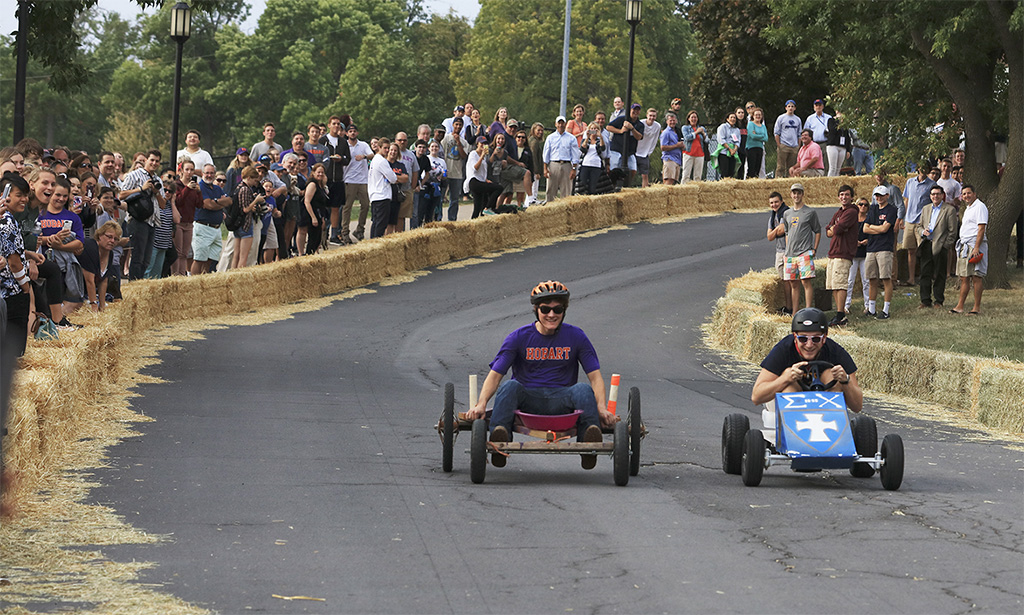
Fall Nationals
Fall Nationals: A race between faculty, staff and students in homemade soap box cars down William Smith Hill. The tradition was started in 1968 by Kappa Sigma as a way to raise money for charity. The race has stopped and started multiple times through the years with the latest held in 2019. Among the heated rivalries of participants was one between 2011 champion and Chi Phi brother Marshall Keeton’14 and Hobart Dean Eugen Baer HON’07, P’95, P’97, a previous Fall Nationals winner who Keeton narrowly defeated. Watch a Homecoming video that features Fall Nationals.

Days of Service
Days of Service: In 1994, more than 700 volunteers from the Colleges and the local community came together on behalf of Geneva in the inaugural HWS Day of Service. Today, HWS holds three community-wide Days of Service each semester, which, combined with the volunteer projects students undertake throughout the academic year, totals more than 80,000 hours of service annually. Under the leadership of Katie Flowers, the Center for Community Engagement and Service Learning has established a national model for service, earning recognition from Washington Monthly as one of the top programs in the country.
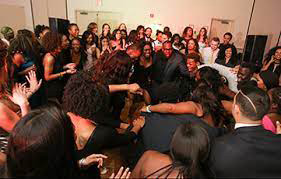
Sankofa Charity Ball
Sankofa Charity Ball: Hosted by Sankofa, the Charity Ball includes dinner, live performances, a keynote speaker, dancing and a silent auction. The Ball has a theme each year and raises money for a different community cause. In 2016, for example, the Ball raised more than $2,000 for scholarship support for two Geneva High School students.
White Deer at Seneca Depot: The former Seneca Depot, formally shut down in 2000 after being used as an army munitions storage facility, is home to a herd of white deer. Driving by the Seneca Depot to spot the deer has been a favorite pastime of students. Read more about the deer and conservation efforts.

President’s Garage Band
President’s Garage Band: The first performance by President Mark D. Gearan’s Garage Band happened at the Senior Dinner in 2005, featuring a mix of faculty, staff and community members with the President on keyboard and vocals. You can watch tributes to the Classes of 2010 and the Classes of 2016.
Heated Cookies: Described as “the greatest study treat” by the staff of the Herald in the March 3, 1995 issue, heated chocolate chip monster cookies were a favorite of students with “the crispy outside of the cookie and soft inside” described as a “tantalizing taste bud experience.” Find the Recipe here.
Toga Parties: Kappa Sigma hosted toga parties that started in the 1970s and lasted throughout the 1980s.
Cosie’s: Sam's Bar & Grill, better known as Cosie's, first started advertising in The Herald in 1957, with a few words in a few square inches: "Sam's Bar -- Ask for Cosmo." Located on Tillman Street and operated by Cosmo Fospero, the bar was a home away from campus for generations of students and faculty. "An enjoyable place; the service and drinks are good, vibes are friendly and there's plenty of space to hang out," according to a succinct review in an October 1974 issue of The Herald. "The tequila sunrise cost .50. No draft beer available." Read tributes to Cosie and the world he created here.
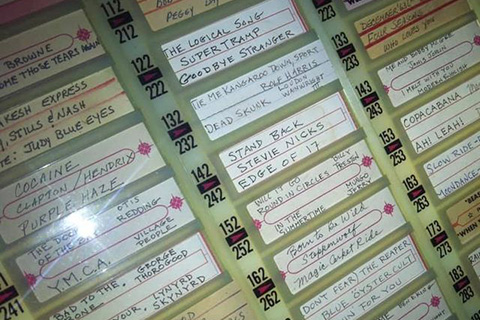
The Jukebox at the Sideshow
The LAO Extravaganza: An annual event honoring Hispanic and Latin American culture, the LAO gala has been celebrated in a number of locations across campus and Geneva and includes cuisine, music, a lecture and performances. The event always also includes a philanthropy component, raising money for a variety of local causes.
The Sideshow: Anita Carlson – known as "Ma" to Side Show regulars – operated the Geneva watering hole from 1985 until her death in 2019. The jukebox offerings didn't change for years and you can listen to the songs on this Spotify playlist that includes 151 songs selected by Carlson's family that represent an era.

Exterior of the Twin Oaks Restaurant in 1986.
Twin Oaks: From 1947 to 1986, the Twin Oaks was the primary student haunt with weekly Mug Nights. Located at the corner of Pulteney and Hamilton, where the HWS entrance marker is today, the Oaks offered a chance to get away from the pressures of the day amid the memorabilia of the past: autographed footballs, ancient lacrosse sticks and yellowed photos of HWS. Those nostalgic for the legendary tavern -- and those too young to remember it -- can get a taste of the atmosphere at the Twin Oaks tent at Reunion.
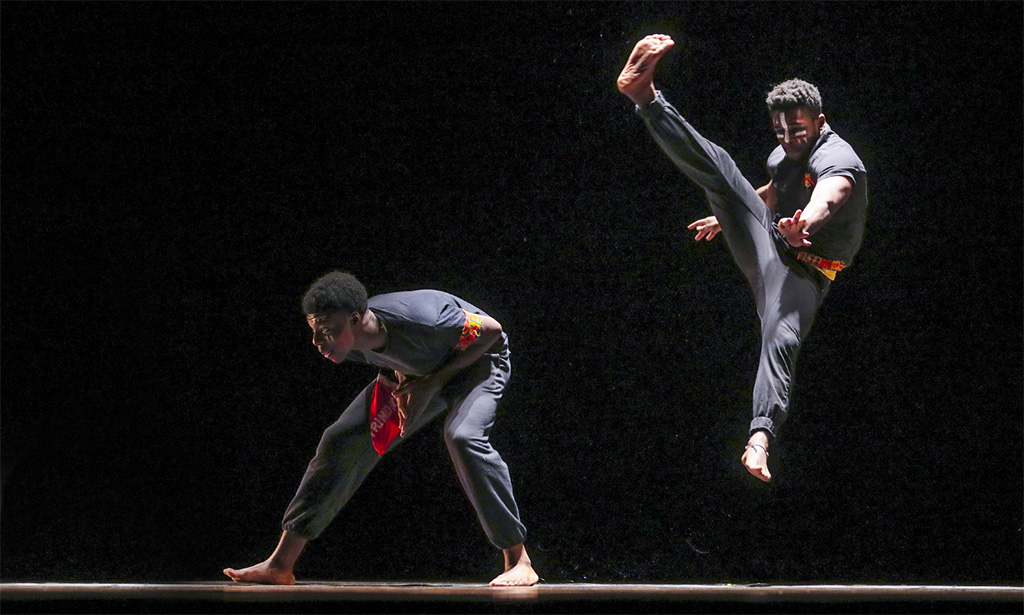
Koshare
Koshare: Koshare debuted on the Bartlett Theatre stage in 1971. When the HWS dance collective’s annual show celebrated its 45th anniversary in 2016, it featured 140 dancers in 20 pieces, including styles from Ghanaian and Afro-Caribbean traditions, to classical ballet, contemporary, tap and hiphop. Since moving to the Smith Opera House in 2013, Koshare has sold out two performances annually in the 1,300-seat venue. It was renamed the Kinetic Dance Collective in 2021.
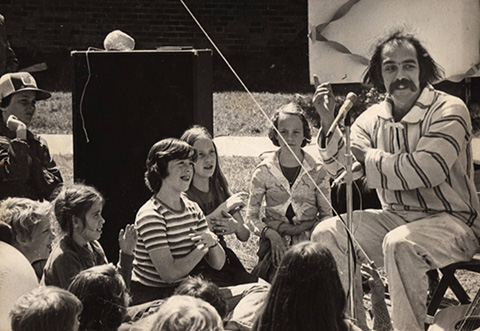
Folk Fest on the Quad.
Folkfest: Between 1976 and 2001, HWS Folk Fest packed the Quad with acts like Doc Watson, Bela Fleck, Toots and the Maytals, Phish and The Slip, as well as a number of faculty, staff, student and alum performers, including Folk Fest's founder, Matthew Stamell '78, P'04
Swim Test: Until 1994, the Colleges required all students to pass a swimming test to graduate. William Smith began the requirement in 1939 and Hobart followed suit in 1948. Until the late 1960s, when Bristol Pool was opened, the test was held at the YMCA in downtown Geneva. While most students got it out of the way in their first year, there are stories of some turning up at Bristol three hours before graduation to take the test.
Traying: For decades, students have “borrowed” food trays from Saga to use as makeshift sleds. Today’s students have access to a number of inflatable and plastic sleds.
Cam’s or Mark’s?: The war of the pizza slice continues today with staunch defenders on both sides.
Breakfast at Connie’s: Perhaps this will only be relevant for rowers, but since the start of the rowing team, Connie’s Diner in Waterloo has been a standing tradition. There isn’t a better spot for a post Saturday practice (large) stack of pancakes.
Spring Days on the Quad: The winters can be long and cold in Geneva. As such, any visitor to campus on the first spring day is likely to find very little space available on the quad. On those first warm days in March (let’s be serious, more like April), you can find students spending their days laying on the quad studying, playing lawn games and generally just hanging out and welcoming the sun back to the northeast.
The Union: No one can forget the Black and White Milkshakes.
Ma Thetes: Annual outdoor spring party hosted by Theta Delta Chi where up and coming bands like Blues Traveler performed.
Air Band: Annual lip-syncing extravaganza featuring solo acts and multimember ensembles at the historic Smith Opera House.
Brew Doggies in front of Medbery.
Hobart Rugby Football Club matches on the Quad.


